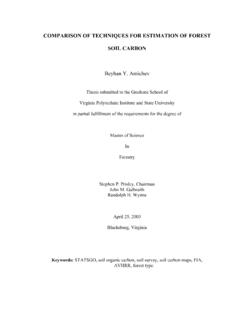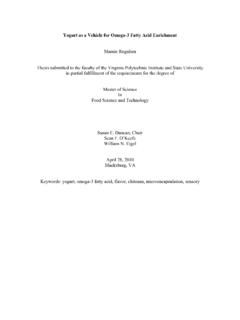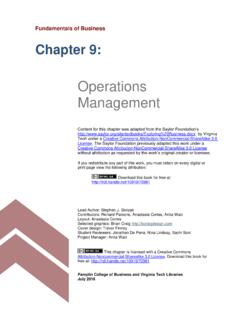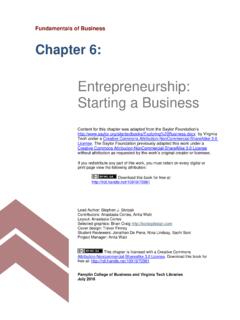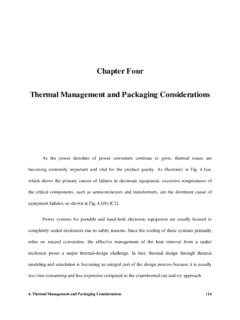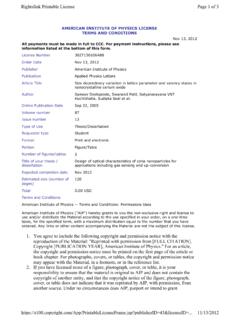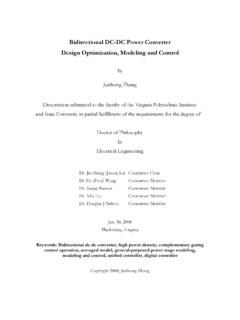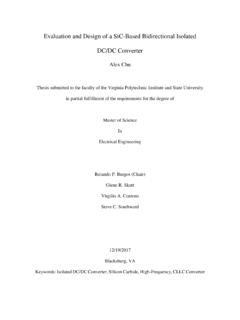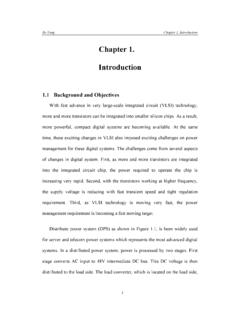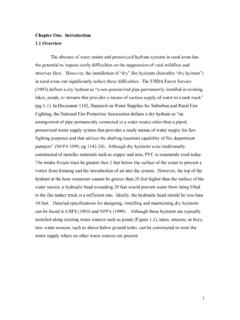Transcription of CHAPTER 4: THE CONSTRUCTION PROCESS OF SEGMENTAL …
1 157 CHAPTER 4: THE CONSTRUCTION PROCESSOF SEGMENTAL BRIDGESThe following CHAPTER 4 presents the important techniques for erection of concrete segmentalbridges. Their characteristics are outlined so that understanding of the specific nature of each ofthese methods can be achieved. Apart from that this CHAPTER deals with the most important issueof CONSTRUCTION loads by distinguishing the various types of CONSTRUCTION loads and showing theirrelation to the erection method used for a specific DEVELOPMENT OF PRESTRESSED SEGMENTAL BRIDGESA pplication of prestressed concrete for bridge CONSTRUCTION was developed by French engineerEug ne Freyssinet, as described in Section , and has spread widely thereafter.
2 Onlyprestressing made the slender, long-span concrete bridges of today possible. The basic principleof prestressing is to induce an initial compressive force in the concrete that will balance tensilestresses that occur in the member under service conditions before any tensile stresses occur in theconcrete and cause cracking. Menn (1990, p126) names the two methods of inducing thesestresses in the structure: By imposed forces from reinforcing steel that is prestressed to a certain degree; By imposed artificial displacements of the supports , second method according to Menn (1990) is much less used because of high losses of theprestressing force due to concrete creep and shrinkage.
3 Prestressing tendons that are used for thefirst method consist of high - strength steel and are fabricated as wires, strands, or bars (Nilson andChapter 4: The CONSTRUCTION PROCESS of SEGMENTAL Bridges158 Winter 1986). For a continuous beam on several supports, most tension will occur in the lowerfibers of the cross-section around midspan and in the upper fibers above intermediate supports. Itis therefore most useful to place tendons in the locations where tensile stresses will occur in thestructure under service. This thought naturally leads to the idea of implementing longitudinaltendons in the beam that are not simply straight but follow a curve from the top above supports tothe bottom at midspan and back to the next support.
4 In Balanced Cantilever CONSTRUCTION the topcables in reaching out from the cantilever base to support the cantilever dead load are calledcantilever beam cables; the bottom cables in the middle of the span are called integration cables(Mathivat 1983).Prestressed concrete, compared with normal reinforced concrete has a higher degree ofsophistication and causes higher cost for labor and for the prestressing tendons; on the other handit saves cost through more economical use of material. Only prestressing makes long and slenderconcrete spans possible at Degree of PrestressingMenn (1990) mentions that choice of the best prestressing profile for a certain project is notpredetermined but is a task for the bridge designer.
5 He further gives an overview of the degree ofprestressing. Full prestressing is supposed to withstand all tensile stresses under serviceconditions. When calculated tensile stresses in the concrete must not exceed a specifiedpermissible value (Menn 1990, p127), so-called limited prestressing is performed. The last andmost common method is partial prestressed, which does not specifically limit the concrete tensilestresses. Still, calculation of behavior at ultimate limit state and under service conditions (Menn 1990, p127) must be calculated, also taking into account the normal reinforcement. Thepurpose of the normal mild reinforcement is the control and distribution of cracking.
6 Because ofthe high prestressing force, less conventional reinforcement is needed in the concrete, andmembers can be thinner and lighter, leading to more economical structures. The reducedsusceptibility to cracking gives prestressed concrete higher 4: The CONSTRUCTION PROCESS of SEGMENTAL Bridges159 Some factors effectively contribute to initial and long-term reduction of the prestressing losses of prestress, also called initial losses, occur once the prestressing force isapplied, after the concrete has been placed and cured. Loss of prestress needs to be anticipatedduring design. Long-term losses in concrete depend on its design mixture, curing, theenvironmental climate, and the member geometry.
7 Textbooks give information on the reasons forprestress losses and provide many formulas to calculate their effect. The following Table 4-1based on Barker and Puckett (1997, pp455-466) summarizes these effects:Table 4-1: Influences Causing Loss of Prestressing ForceInitial loss of prestressLong-term loss of prestressSlippage of strands in the anchorages(before wedges or nuts grip firmly)Relaxation of steel strands(loss of stress under constant strain)Elastic shortening of concrete member(relieves previously stressed tendons)Creep of concrete member(plastic deformation under constant stress)Friction between tendon and duct interior( wobble effect because of curved ducts)Shrinkage of concrete member(volume change due to evaporation)
8 Pre-TensioningPrestressing basically can be carried out as pre-tensioning and post-tensioning, referring to thetime when the prestressing force is imposed with respect to casting. In pre-tensioning the tendonsare anchored to a stiff frame around the casting bed and are prestressed before the concrete isplaced. When the concrete has gained sufficient strength the tendons are relieved from theiranchorages and stress the concrete through bond between steel and concrete. Menn (1990) notesthat this method is especially feasible for precasting concrete elements because of the solidanchorages Post-TensioningPost-tensioning denotes the method of stressing the tendons only after the concrete has reached aspecified strength .
9 To allow for the necessary movement of the tendons inside the concrete theyChapter 4: The CONSTRUCTION PROCESS of SEGMENTAL Bridges160are installed in tendon ducts that are made from steel or polyethylene. The ducts need to be fixedto the normal reinforcement to prevent misalignment during casting. After post-tensioning theducts are filled with cement grout under pressure for and protection against corrosion of thetendons. Grouting the ducts will introduce bond between the steel and the surrounding post-tensioning is less common. Very similar to prestressing tendons are thetechniques used for protection of stay cables of cable-stayed bridges against corrosion, asdescribed by Funahashi (1995).
10 Two different ways of CONSTRUCTION exist for post-tensioning. The prestressing tendons can belocated either inside the concrete or outside of it. External post-tensioning has the advantage ofeasy accessibility for inspection, maintenance works and replacement. Nevertheless problemswith corrosion protection are the reason for use of interior post-tensioning in most tendons need special anchorages that are cast into the concrete have the shape of cones that are sitting on the end of the duct for better accessibilityto single tendon strands with the prestressing jack. Anchorages are mostly surrounded by spiralreinforcement, which serves to distribute the compressive stresses into the concrete wedges around each strand or nuts (Menn 1990) fix the strands to the front plate of theanchorage.
